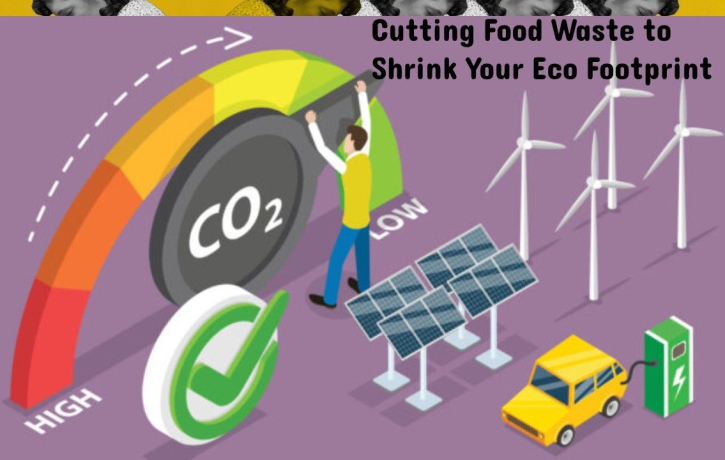Food Waste Solutions: Reducing Your Environmental Footprint
Cutting Food Waste to Shrink Your Eco Footprint. Waste is one of the most pressing environmental issues of our time, yet it’s often overlooked. Every year, approximately one-third of all food produced globally—around 1.3 billion tons—is wasted. This squanders valuable resources like water, energy, and labor and contributes significantly to greenhouse gas emissions. Reducing food waste is one of the simplest and most impactful ways individuals can reduce their environmental footprint.
Why Food Waste Matters
When Cutting Food Waste to Shrink Your Eco Footprint, so are the resources used to produce it. Agriculture requires vast amounts of water, land, and fuel. Wasted food means wasted effort—and when it ends up in landfills, it decomposes and releases methane, a greenhouse gas far more potent than carbon dioxide.
According to the United Nations Food and Agriculture Organization, if food waste were a country, it would be the third-largest emitter of greenhouse gases after the U.S. and China. By addressing food waste, we not only conserve resources but also fight climate change.
Practical Solutions to Reduce Food Waste
1. Plan Meals and Shop Smart
Creating a meal plan and shopping list helps avoid overbuying. Stick to your list, and resist impulse purchases, especially perishables that may go bad before you can use them.
2. Understand Expiration Dates
“Best before” and “use by” dates can be confusing. Many foods are still safe to eat after the “best before” date, especially if stored properly. Trust your senses—if it looks, smells, and tastes fine, it likely is.
3. Store Food Properly
Proper storage extends the life of food. Keep your fridge at the right temperature (below 5°C or 41°F), use airtight containers, and store produce in ways that reduce spoilage (e.g., keep apples away from other fruits to prevent premature ripening).
4. Use Leftovers Creatively
Transform leftovers into new meals—soups, stir-fries, and casseroles are all great options. Make it a habit to use what’s already in your fridge before buying more.
5. Compost What You Can’t Use
Even with best efforts, some waste is inevitable. Composting turns food scraps into nutrient-rich soil instead of harmful methane gas. It’s a powerful way to give back to the environment.
6. Support Food Rescue Initiatives
Many organizations collect surplus food from retailers and redirect it to those in need. Supporting or volunteering with these initiatives helps reduce waste while addressing food insecurity.
The Bigger Picture
Reducing food waste isn’t just about saving money or being more organized—it’s a powerful step toward sustainability. If everyone made small changes, the collective impact could be massive: lower greenhouse gas emissions, reduced pressure on landfills, and a more efficient global food system.
Final Thought
Cutting Food Waste to Shrink Your Eco Footprint is something we can all do, starting today. By being mindful of how we shop, store, and consume food, we reduce our environmental footprint and help create a more sustainable future for everyone. Small actions, multiplied across millions of households, can lead to big change.








